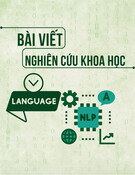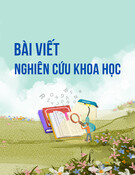
TẠP CHÍ KHOA HỌC - ĐẠI HỌC ĐỒNG NAI, SỐ 33 - 2024 ISSN 2354-1482
1
IMPLEMENTING A GENRE-BASED APPROACH IN TEACHING
ARGUMENTATIVE WRITING TO THIRD-YEAR ENGLISH
MAJORS AT DONG NAI UNIVERSITY
Truong Phi Luan
Dong Nai University
Email: truongphiluan@gmail.com
(Received: 23/8/2024, Revised: 6/10/2024, Accepted for publication: 11/12/2024)
ABSTRACT
This study is an additional endeavor to re-emphasize the impact of the systemic
functional linguistic genre-based approach (SFL GBA) on teaching English
argumentative genres to the third-year English majors, batch 11, at Dong Nai
University’s faculty of foreign languages, both in terms of their improved written
performances and positive perceptions towards the teaching-learning cycle (TLC).
Based on the conceptual framework by Hammond and her colleagues (1992), an
experimental study of academic argumentative writing was carried out at a regular
class hour from January 8th, 2024, to April 8th, 2024, with 45 English majors, and then
these data were analyzed and interpreted in terms of linguistic and content analysis.
The findings of this study indicated that student participants gained control of the key
features of the argumentative genres in terms of social purposes, linguistic features,
and schematic structure and showed their positive attitudes towards the use of the TLC
in learning argumentative genres. On the basis of the findings, some further
recommendations for future studies were also suggested.
Keywords: Systemtic functional linguistics (SFL), genre-based approach (GBA),
the teaching-learning cycle (TLC), argumentative genres, EFL, ESL
1. Introduction
The importance of English academic
argumentative writing skills has long
been emphasized in western cultures
(Halliday, 1994; Martin, 1985). Martin
(1985, p. 51) argued that “the most
prestigious users of languages become
writers, not speakers.” This implies that
EFL and ESL learners should become
proficient writers to participate
effectively in academic and occupational
settings where writing skills are required
for their survival.
In Vietnamese tertiary context, the
ability to write argumentatively has
become more urgent than ever before.
This skill is compulsory in the language
curriculum of all English majors.
Students are instructed to write academic
essays based on topics of argumentation,
discussion, and problem-solving. This is
considered necessary for English majors
to pass one of the standardized
international exams, such as IELTS
and/or C1 in CEFR equivalent or the
three-level Vietnamese Standardized Test
of English Proficiency (VSTEP) in
Vietnam. In addition, being able to write
academic essays proficiently is a
prerequisite for postgraduate courses.
However, academic argumentative
writing skills are generally considered to
be extremely difficult for EFL and ESL
learners (Richards, 1990). Richards &
Renandya (2002) asserted that students
in non-native-speaking countries often
encounter problems in writing in terms
of generating, organizing, and putting
the ideas into readable texts. As for
Vietnamese learners of English, they
even face more challenges in writing.
They include their low-quality writing

TẠP CHÍ KHOA HỌC - ĐẠI HỌC ĐỒNG NAI, SỐ 33 - 2024 ISSN 2354-1482
2
background, low motivation (Pham &
Bui, 2021), and approaches to teaching
writing, student-teacher’s role, cultural
impact, and testing and assessment on
learners’ EFL writing (Luu, 2011; Trinh
& Nguyen, 2014).
In terms of writing approaches, two
prominent approaches currently applied
in EFL writing classes, including
Vietnam, are the product-based approach
and the process-based approach. While
the former focuses heavily on coherent,
error-free texts, the latter concentrates on
the process of composing the text through
several stages, such as planning, writing,
drafting, and redrafting. These
approaches, however, have drawn a lot of
criticism from the researchers (Badger,
2000; Hyland, 2002). Generally, they
maintained that these writing approaches
do not better prepare the learners for
writing communicative purposes in the
real world because, according to Hyland,
“we write something to achieve some
purposes” (Hyland, 2003, p. 18). As such,
factors such as context, communicative
and social purposes, audiences, lexico-
grammar, and text structure must be taken
into account in the essay-composing
process.
Second, teachers’ and students’ role
in the Vietnamese university writing
classes is also problematic. In writing
classes, students play a relatively passive
role as compared to teachers, who are the
sole transmitters of knowledge. There is
no room for student-teacher interaction
(Truong, 2011). In other words, students
are completely dependent on the teachers
for language sources (Nunan, 1999). As
exam-oriented purposes and language-
based writing assessment are still heavily
emphasized in Vietnamese tertiary
education, grammatical accuracy must be
prioritized, while language function,
context, and the messages of the text
genres conveyed can be undermined or
left forgotten.
Finally, the cross-cultural
differences may be a barrier for students
learning to write English argumentative
essays (Ha, 2001). These studies have
pointed out that students from Asian
cultures often find it uncomfortable to
express their direct opinions in the
argumentative essays because of the
Confucius ideology (Pham, 2011). Ha's
(2001) study, for example, discovered
that four Vietnamese postgraduate
students at various universities in
Melbourne, Australia, were unable to
articulate/formulate their thesis
statement at the outset of their writings.
The data from her interviews revealed
that these participants often wrote their
thesis statement indirectly, which is
typical of their Eastern culture, with the
aim to avoid critiquing others, especially
those who hold a higher social strata than
they do.
In recent years, genre-based
instruction for teaching writing has
gained traction and has been applied
widely both in Australia and globally.
This approach focuses both on form and
meaning, emphasizing the importance of
exploring the context of a piece of
language in action (Halliday, 1994).
Derived from the theory of
Hallidayan Systemic Functional
Linguistics (SFL), this approach
maintained that language is a resource for
making meaning and how language is
involved in the construction of meaning
(Derewianka, 1990). Genre is a tool to
perform a particular social function, and
function is realized through writing
conventions for focused genres in terms
of lexico-grammar and text structure.
Writing in this way can meet both the

TẠP CHÍ KHOA HỌC - ĐẠI HỌC ĐỒNG NAI, SỐ 33 - 2024 ISSN 2354-1482
3
expectations of plural readers in
academic and occupational settings and
in a broader language community in
terms of social purposes, linguistic
features, and schematic structure.
A genre-based approach (GBA) is
chosen for this study in the hope of
helping third-year English majors at
Dong Nai University (DnU) overcome
difficulties in learning argumentative
essays and simultaneously create positive
changes in their perceptions towards
learning writing in general and academic
argumentative essays in particular.
However, before claiming the
effectiveness of this approach in
academic writing pedagogy, it is
necessary to investigate it seriously and
carefully in an actual classroom setting
through “convincing research and
theoretical evidence, preferably before its
wholesale introduction” (Freedman,
1993, p. 22).
This present study, therefore,
attempts to find the answers to the two
following research questions:
1. To what extent can students gain
better control of key features of
argumentative genres after their exposure
to the GBA?
2. What are students’ overall
perceptions towards the four main stages
of the teaching-learning cycle?
2. Literature review
2.1. Theoretical framework of systemic
functional linguistics (SFL) and SFL
Genre pedagogy
The central concept of the SFL is that
language is functional and serves three
general social functions: to talk about
one’s experience of the world, to interact
with other people, and to organize
messages (Halliday, 1994). They are
functionally referred to as ideational,
interpersonal, and textual, respectively
(Halliday, 1994). Concretely, every
language must be understood in context.
Diverse text genres are determined by
diverse situations, which also convey
different meanings. According to SFL,
there are two degrees of context that
affect the text genres: context of situation
(register) and context of culture (genre).
“Context of situation refers to the
environment, time, and place, etc., in
which the discourse occurs, and also the
relationship between the participants”
(Song, 2010, p. 877). It determines the
formality of language. Its three factors,
field (subject area or topic), tenor
(relationship between participants), and
mode (channel of communication),
closely align with the three previously
indicated metafunctions. The context of
culture, on the other hand, refers to the
purposes or social function, attitudes,
values, and shared experiences of people
living in a particular culture, as well as
culture-specific expectations, which are
“ways of getting things done.” (Paltridge,
2002b, p. 55). As genre is ingrained in the
context of culture, learning about genre is
to learn about the culture. To put it
differently, context of culture is genre,
while context of situation pays more
attention to lexico-grammar and
schematic structure of the text-genre that
help function of the required text-genres
realized. According to traditional writing
perspectives, schematic structure refers to
three main parts of an essay in terms of
introduction, body developments, and
conclusion (Truong, 2011; Luu, 2011).
There are numerous definitions of
genres. Derewianka & Hammond (2001),
for example, defined genres as
predictable and recurring patterns of
everday, academic, and literary texts
occurring within a particular context.
Learning about genres, therefore, is a

TẠP CHÍ KHOA HỌC - ĐẠI HỌC ĐỒNG NAI, SỐ 33 - 2024 ISSN 2354-1482
4
fundamental part of language
development, and it is our ability to
predict the compositional structure and
length of genres that enables us to
communicate (Bakhtin & White, 2000).
Based on the primary social purposes
of the text genre, the SFL Australian
genre tradition classified genres into six
major school genres (Derewianka, 1990).
They include narratives, recounts,
information reports, instructions,
explanations, and expository texts. The
expository texts are of particular interest
to this present study because they are
commonly taught in tertiary education,
where English majors are expected to
write essays in their academic classes in
order to get ready for standardized
international exams like IELTS, TOEFL,
TOEIC, CEFR, VSTEP, and others.
Additionally, it also provides a basis for
English-majored undergraduates to
continue with their post-graduate
“Research Methodology Module.”
2.2. The Teaching-learning cycle (TLC)
The two most important aspects of
genre pedagogy are scaffolded learning
theory, initiated by Vygotsky (1978), and
explicit instruction of writing
conventions of a focused genre through a
cycle known as the teching-learning cycle
(TLC).
Firstly, Vygotskian social-cultural
theory views writing as a social activity
necessitating dynamic interaction
between teachers and learners as well as
between peers throughout the entire text-
composing process. Teacher, at the
beginning, acting as an expert guides
novice students through each writing
stage so that, at the end of the writing
process, they can confidently produce a
similar text genre approximating the
genre under focus. The writing activities
in this mode incorporate many writing
steps, such as researching, analyzing the
sample texts, joint construction of text,
and independent construction of text
through exchanging and collaborating
activities with their peers in pairs and
groups and with teachers to negotiate the
meanings to achieve new knowledge for
their later independent production of text.
“Writing in this way, it is believed, can
remove the feeling of isolation that
bothers many learners when writing and,
at the same time, help student writers
have positive reinforcements about their
knowledge of linguistics, content, and
ideas in the composing of texts.” (Truong,
2011, p. 15).
Secondly, explicit instruction of
genre is concretized through the TLC to
help student writers realize function,
grammar of linguistic choices, text
structure, and the register (field, tenor,
and mode) of the focused genre. As
emphasized by Truong (2011, p. 16),
“students cannot produce a particular text
type successfully if they are not taught
explicitly about the linguistic conventions
of that text type with respect to language
features and schematic structure.”
There have been many models of
TLC in the literature so far. The first
mode proposed by Callahagan & Rothery
(1988, p. 39) and later elaborated by Cope
& Kalantzis (1993, p. 10) incorporates
writing instruction through three main
stages: modeling of text, joint negotiation
of text, and independent construction of
text. Later on, many other versions of
TLC were added. Concretely, there are
two other versions: the former
incorporates four stages of the TLC:
preparing or building knowledge of the
field, modeling of the text, joint
construction of the text, and independent
construction of text (Hammond & her
colleagues, 1992); the latter incorporates

TẠP CHÍ KHOA HỌC - ĐẠI HỌC ĐỒNG NAI, SỐ 33 - 2024 ISSN 2354-1482
5
five stages: building knowledge of the
field, modeling of text, joint construction
of text, independent construction of text,
and linking related text (Feez & Joyce,
2002). These two new versions are
extremely important for EFL students
who are unfamiliar with western genres.
So they need further assistance in terms
of preparing and building knowledge of
the field as well as comparing other
genres to realize the similarities and
differences among them. This study
adapted the four stages of Hammond &
her colleagues’s (1992) TLC to
convenience the participants of this study.
The four stages of the TLC are further
elaborated below.
The first stage, buiding knowledge of
the field, aims to activate students’ prior
knowledge of their understanding of the
genre through activities such as
“brainstorming, watching films, note-
taking, oral presentation, and others” to
realize the context of situation and
context of culture of the focused genre
(Kongpetch, 2006, p. 12).
The second stage, modeling of text,
concerns teacher’s demonstration of how
social function, lexicogrammar, and text
structure are realized in the sample text.
This can be done through a series of
guided questions.
• Concerning context, purposes, and
audiences of the focused genre, the guided
questions can be: “What is the text about?,
How do you know?, Who wrote it?, Why
did he/she write it?, Where do you think
you would find the text like this one?”
(Kongpetch, 2006, p. 12).
• Concerning the schematic
structure of the text, the guided questions
can be: “What did the writer do first, next,
and last?, What does the first sentence of
the first/ second/ third paragraph give
information about?” (Kongpetch, 2006,
p. 12).
• Concerning the analysis of the
lexicogrammar of the text genre, student
writers will be explained in terms of
salient linguistic features (i.e., vocabulary
and grammar focus) that are compulsory
for the focused genre.
The third stage, joint construction of
text, involves teachers and students
jointly composing another genre topic
that approximates the text genre in the
modeling of text in terms of linguistic
features and schematic structure. In this
stage, the teacher writes down ideas
contributed by their students on the
board, drawing their attention towards the
move-step structure and lexico-grammar
manifested in the text genre.
The final stage, independent
construction of text, involves student
writers’ independent production of a
similar text genre. During this stage, the
teacher does not intervene in the students’
writing activities and gives control to the
students. To produce a successful similar
text genre, student writers are required to
undergo many steps, such as
“brainstorming, researching
information, writing many drafts,
refining their products, conferencing with
their peers and their teachers, editing,
and finally producing a text of the genre
under study.” (Truong, 2011, p. 23).
2.3. Argumentative genre
It is crucial for students to master the
schematic structure of the argumentative
genre in terms of thesis statement or
preview, argument, counterargument and
refutation, and restatement (Martin &
Rothery, 1980). In the introduction, the
writer provides background information
on debating issues and then ends his or
her introduction with a direct thesis
statement. Alternatively, he or she can



![Mẫu câu viết thư thân mật bằng Tiếng Anh [Chuẩn Nhất]](https://cdn.tailieu.vn/images/document/thumbnail/2025/20250708/caotiendat91211.thd2017@gmail.com/135x160/80151751961845.jpg)
![Tài liệu gợi ý viết email tiếng Anh và 35 đề thi mẫu [chuẩn SEO]](https://cdn.tailieu.vn/images/document/thumbnail/2025/20250708/caotiendat91211.thd2017@gmail.com/135x160/25321751961846.jpg)





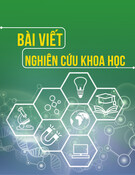
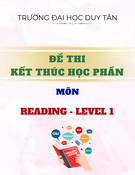
![Đề cương môn Tiếng Anh 1 [Chuẩn Nhất/Mới Nhất]](https://cdn.tailieu.vn/images/document/thumbnail/2025/20251130/cubabep141@gmail.com/135x160/51711764555685.jpg)
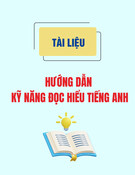

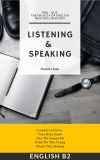
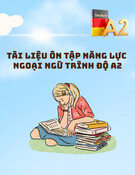
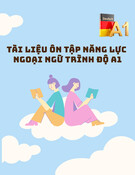
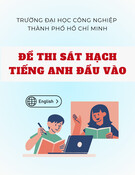
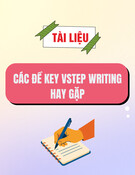
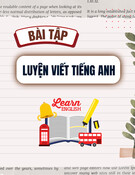
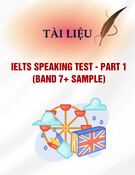
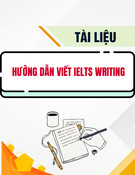
![Mẫu thư Tiếng Anh: Tài liệu [Mô tả chi tiết hơn về loại tài liệu hoặc mục đích sử dụng]](https://cdn.tailieu.vn/images/document/thumbnail/2025/20250814/vinhsannguyenphuc@gmail.com/135x160/71321755225259.jpg)
